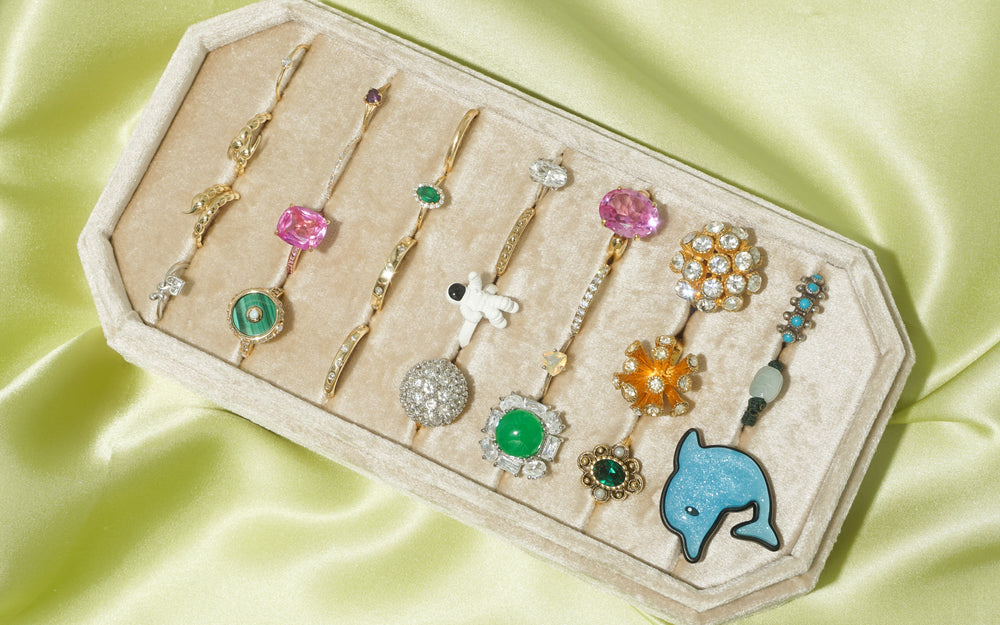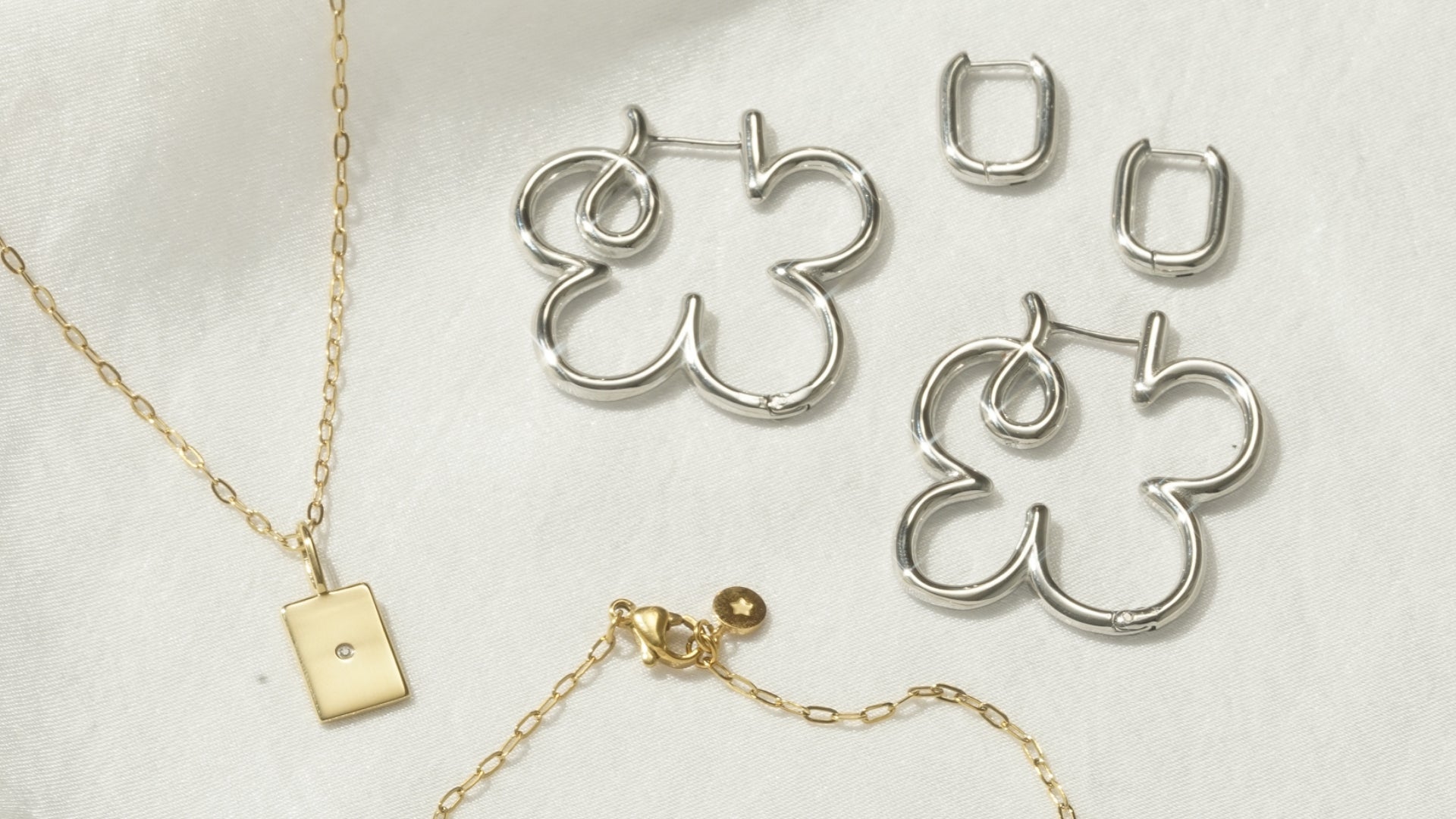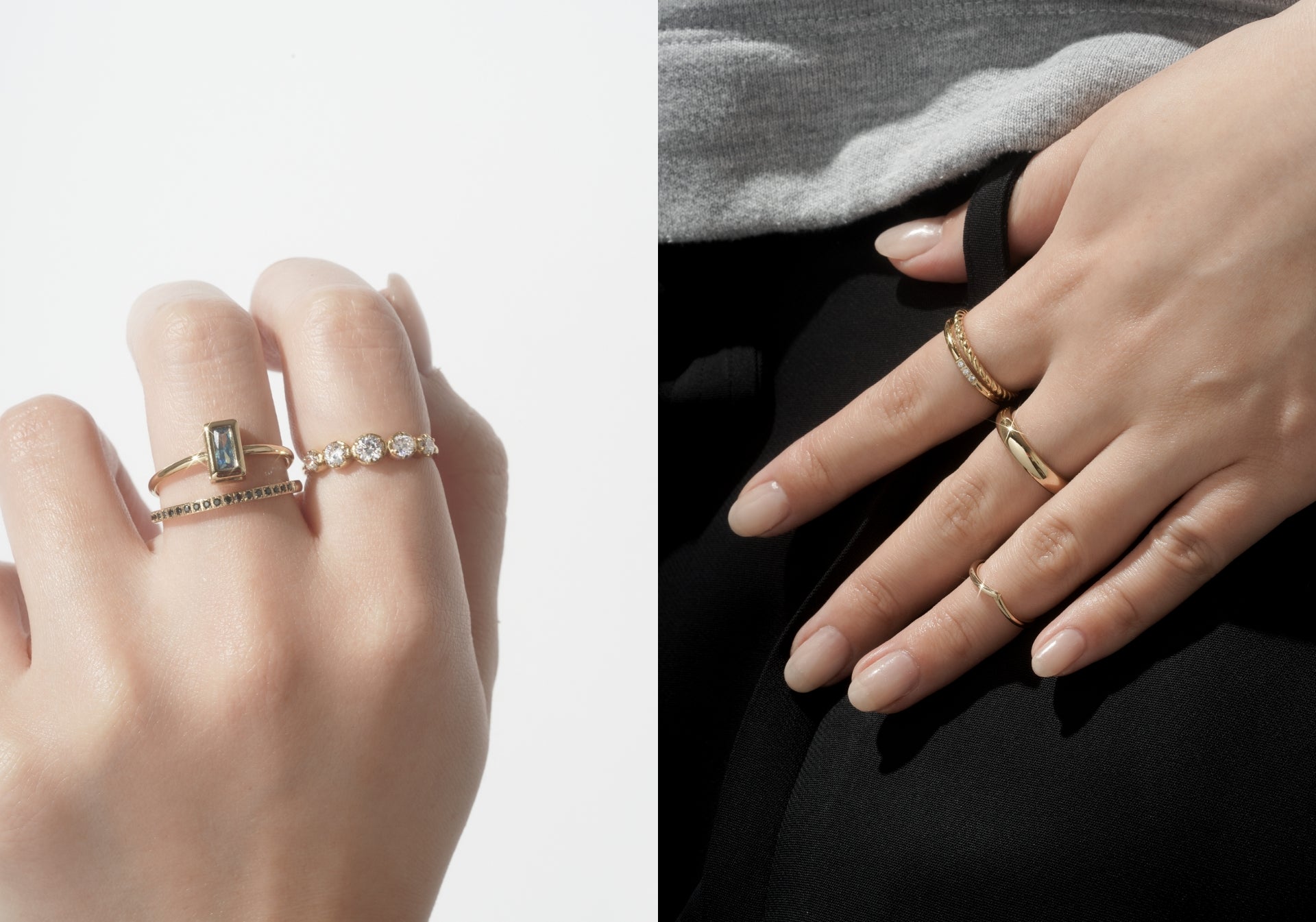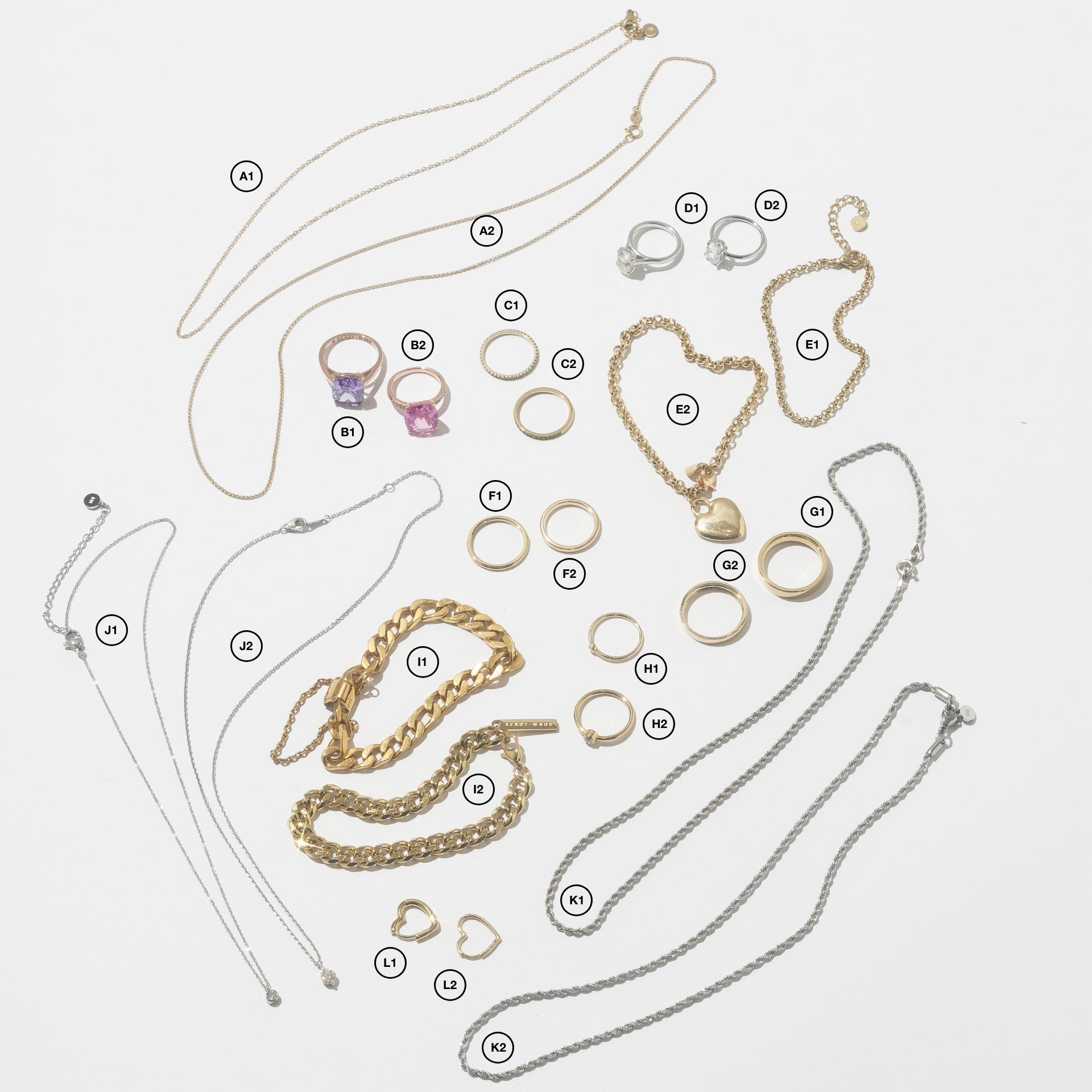We all know Fashion and Fine by now, but there have been a few updates in the past decade (finally). What are the different jewelry categories now? And how to tell them apart especially if someone is claiming one for another? Here’s a breakdown.
FASHION JEWELRY
Fashion jewelry is what everyone likely runs into everyday since it’s everywhere – from department stores to fast fashion chains to box chains to indie stores. In a nutshell, fashion jewelry is more trend-based (remember that trends can be both statement and dainty) and often made with inexpensive materials. Fashion jewelry is often gold plated or electroplated and gold filled (higher end than gold plated), and the stones used in these pieces can range from very baseline paste stones to foiled glass to upper range Swarovski crystals. Which segues us to price points: fashion jewelry has a huge spectrum when it comes to how much one can pay for it. On one hand, there are very inexpensive options (enter the subcategory of Fast Jewelry which are pieces manufactured in massive quantities with barely any emphasis on materials, craft, or design) and on the other, there are expensive options if the fashion piece is coming from a branded designer where you are paying more for the name than for the jewelry piece itself.
COSTUME JEWELRY
Synonymous with fashion jewelry, costume jewelry is more often used to describe vintage pieces that are non-fine. Style-wise, costume generally refers to something you can dress up, so pieces are usually gilded (gold plated) in very yellow gold and studded with bright replica gemstones.
FINE JEWELRY
This category may have become muddy in the public sphere thanks to categories like demi-fine jewelry and gold filled, but really, fine jewelry is easy to discern. Simply, fine jewelry is any jewelry made from precious metals like solid gold or platinum using genuine gemstones (range of quality is another aspect but we won’t get into that here). Note that categorization is one thing, but quality and value is another: there are massive differences between a piece that is 9k gold and a piece that is 18k gold (we’ll be publishing a post on materials soon so please stay tuned). The amount of material used is also important in determining value, so pay attention to the gram weight. Finally, fine jewelry handmade from a local jeweler versus from a famous brand is going to differ significantly in price due to heritage craft and whatever other secrets these brands say they have (“our gold color is unique”). And of course, there’s also handmade fine jewelry (for example, a ring that is cut from wires or sheets and then welded and polished and set) and cast fine jewelry (molten metal is poured into molds). Branded retailers will use the cast method when making their fine pieces and prices should reflect that.
DEMI-FINE or SEMI-FINE JEWELRY
This isn’t a measurable standard that experts use to categorize jewelry. Demi-fine jewelry has come into the jewelry jargon these past few years due to the rise in designers or retailers using this term to describe pieces that are made from a better regarded metal such as 925 sterling (instead of a material like brass or the elusive “mixed metal”) and uses semi-precious stones like rose quartz and topaz. Some retailers may even categorize anything that is gold filled or gold plated as demi-fine but we think the best way to determine whether something can be is demi-fine is to categorize the base metal and stones used in the piece and decide if the piece is worth an upgraded price point from fashion or fast jewelry but still below the price of fine jewelry.
HIGH JEWELRY
At Ready-Made, no one has laid eyes on high jewelry pieces except on the TV. Every high jewelry piece is exclusive and one-of-a-kind using the highest quality materials (sometimes, even super rare diamonds and gemstones). The craft involved in making a high jewelry piece is masterful, and there’s always a story behind these collectible pieces that are hailed as works of art. Price? Starting from the low hundred thousands and can go up to millions. But don’t quote us.
ALTERNATIVE JEWELRY
We have yet to hear anyone say, “alternative jewelry”, but we do hear “alternative metals” all the time. These are materials like titanium, tungsten carbide, stainless steel, ceramic, and cobalt. Historically, these materials have been used almost exclusively in men’s jewelry for two reasons: 1) they’re harder to work with so dainty jewelry designed for women seemed impossible; and 2) supposedly men were less averse to the idea of non-fine metals. Ready-Made falls under the category of alternative jewelry but it should be noted that alternatives exist for many reasons. If we go back to the historical use of titanium and tungsten as men’s wedding bands, the reasoning was because these two metals are extremely strong and scratch proof and make for great permanent yet relatively inexpensive pieces. They also have a certain look – titanium can come in black, gray, or silver while tungsten can be polished to a brilliant shine. Ceramics, on the other hand and not to be confused with porcelain or clay, were historically used for its look as well. It was viewed as softer, allowing a new texture amongst all the metal, but it was also super strong and reliable. For us, we turned to alternative materials because we simply didn’t want to work with fine metals and real gemstones – the history, eco and ethical considerations weren’t worth it to us even for recycled gold. Plus, we wanted to make jewelry that was very affordable but also high quality. High quality means many things, but for us it meant jewelry that didn’t break or color that didn’t wear off in a week as well as pieces that were skin-safe. Working with alternatives seemed like our best bet.







